The understanding of attributes, also known as properties or characteristics of classes, is essential for any programming language, especially for Java. In this guide, you will learn how to define, use, and manage attributes with getter and setter methods. These steps are not only important for the programming language itself but also for developing clean and maintainable code structures.
Main insights
- Attributes are variables that correspond to the state of an object.
- Getter and setter methods are important for accessing and modifying attributes.
- The use of a constructor allows for easy setting of attribute values during object instantiation.
- Encapsulation through getters and setters improves code maintainability.
Step-by-Step Guide
The following steps guide you step by step through the creation of a Java class with attributes and their management through getter and setter methods.
1. Define your class and attributes
First, we create a class that acts as a data structure. For example, you can define a class for employees. In this class, attributes such as first name, last name, and age are included.
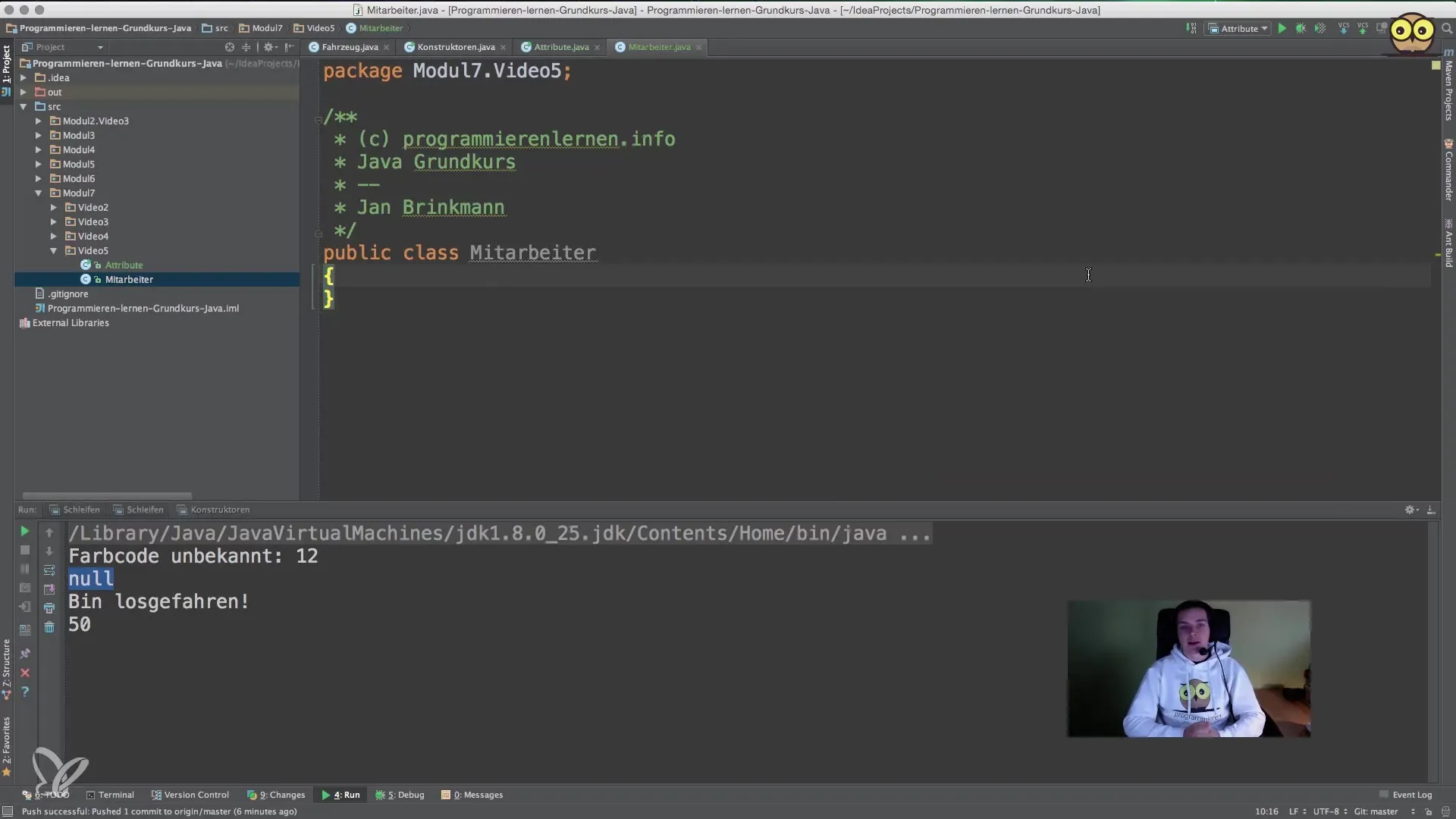
2. Create a constructor
To set the class attributes when creating an object, we use a constructor. We adjust the attributes to the parameters of the constructor.
3. Create getter and setter methods
To access or change the attributes, getter and setter methods are essential. You can create these methods manually or have them generated by your IDE. Here is an example of the getter and setter for the first name:
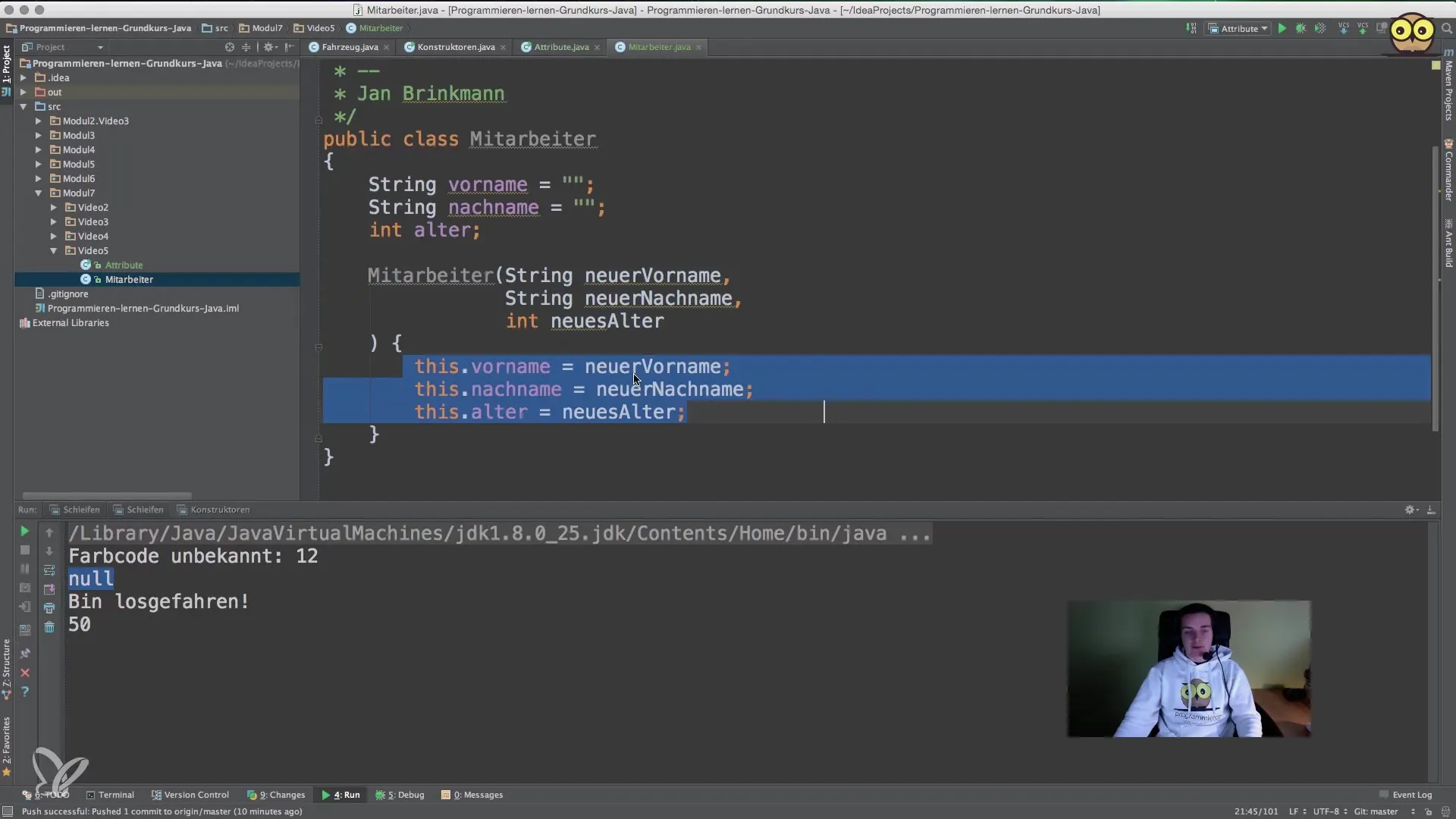
4. Implement getter and setter methods for other attributes
Similar to the getter and setter already created for the first name, you can also create getter and setter methods for last name and age. Here is an example:
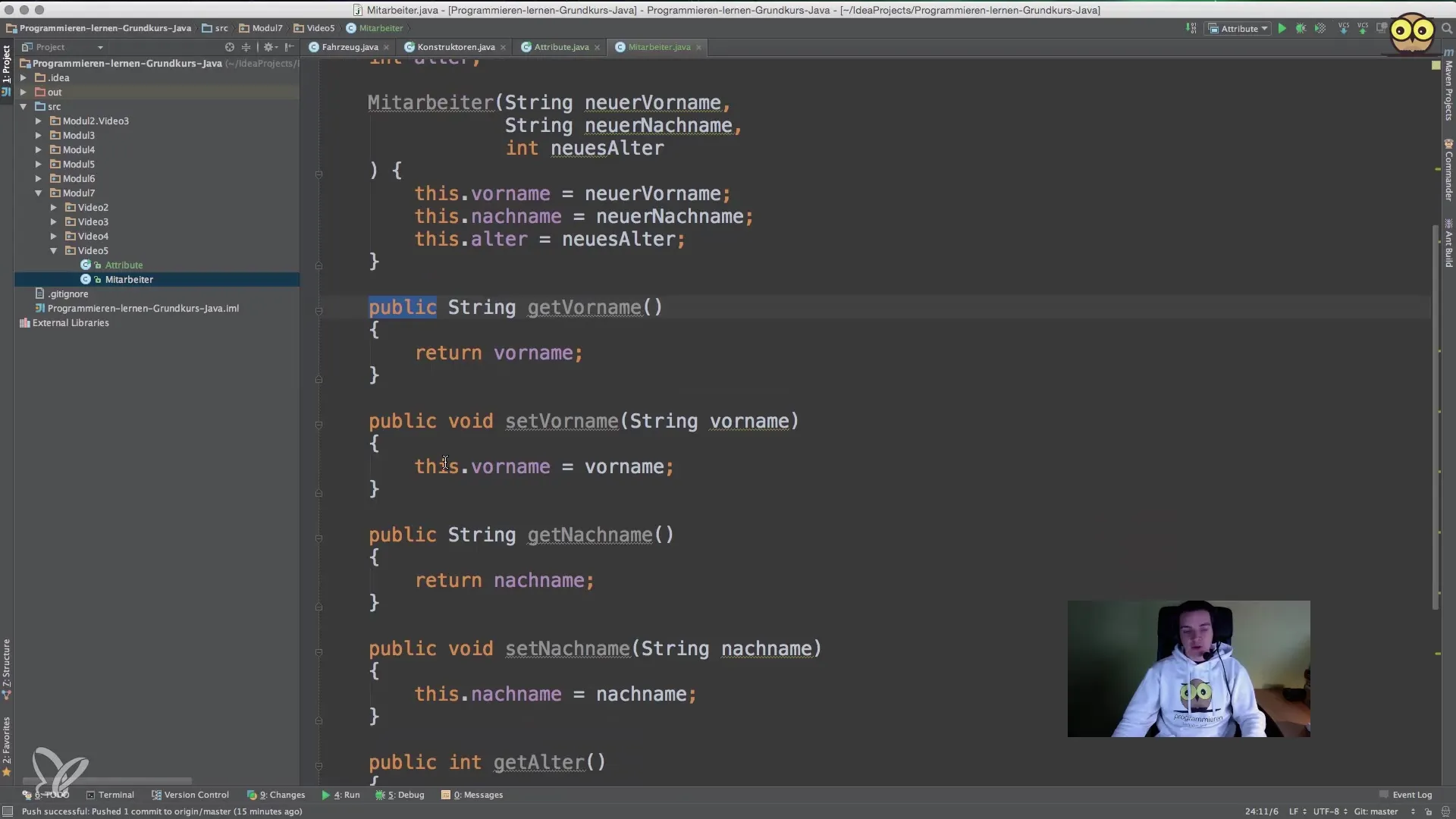
5. Use code generators for getters and setters
To save time, many IDEs offer the ability to automatically generate getters and setters. In the IDE, you can navigate to the code and select the Generate option. Choose the attributes for which you want to generate getters and setters.
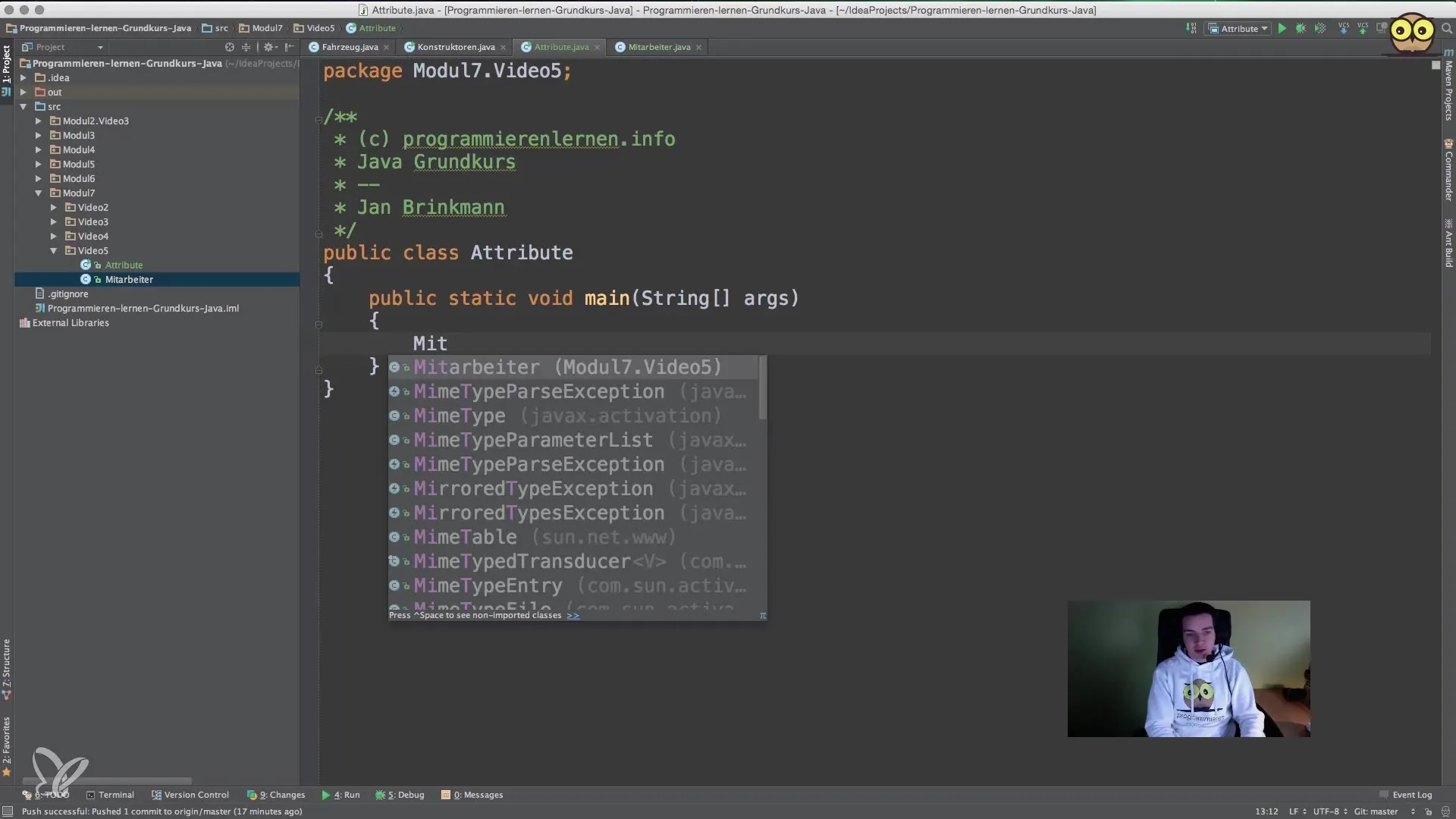
6. Test your class
Now it’s time to ensure that everything works correctly. You can create a new employee object and test the methods:
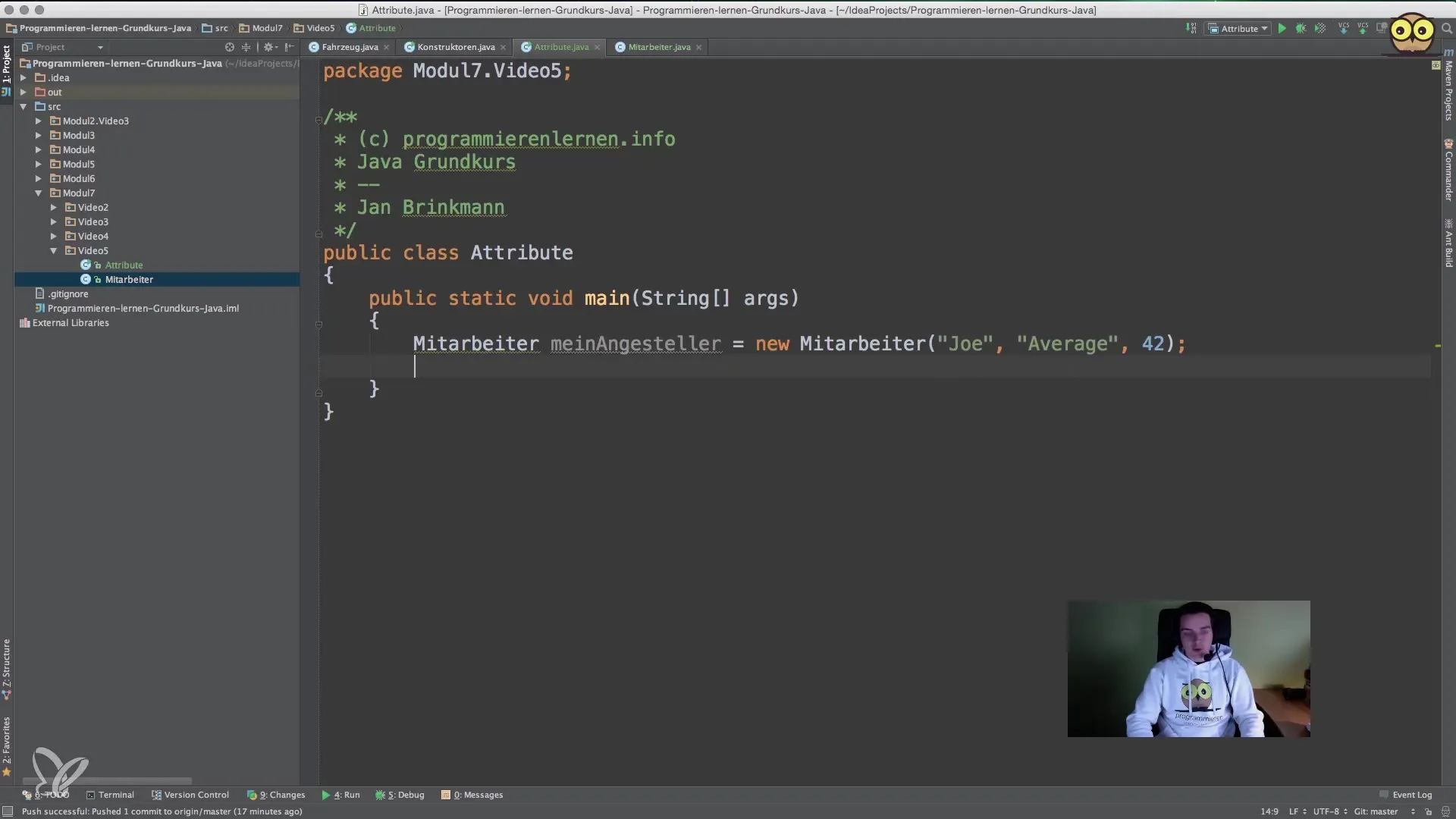
7. Create a method to combine attributes
To allow for user-friendly representation, you can add a method that returns the full name of an employee:
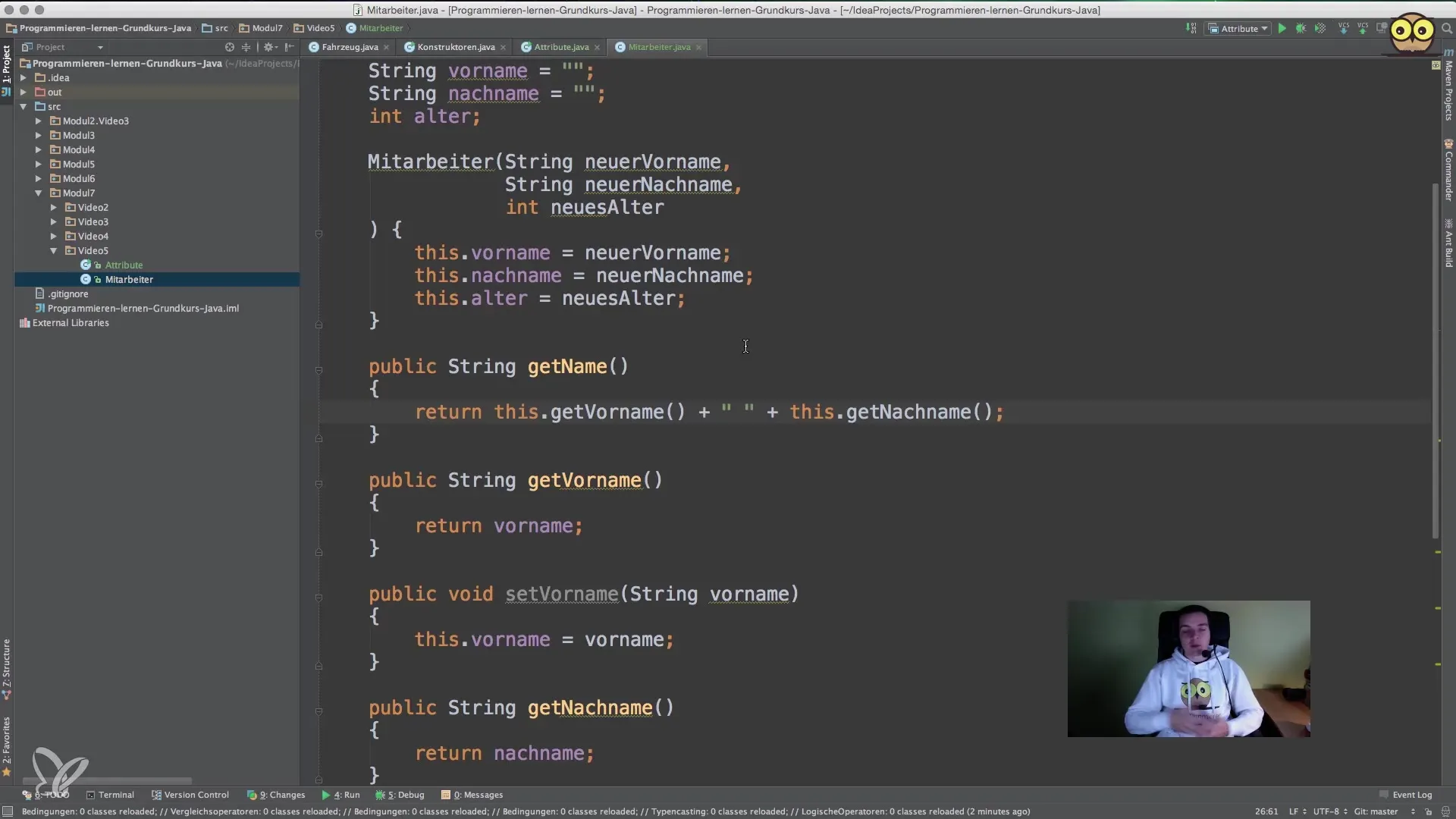
8. Use the combined method
Use the new method to output the full name of the employee:
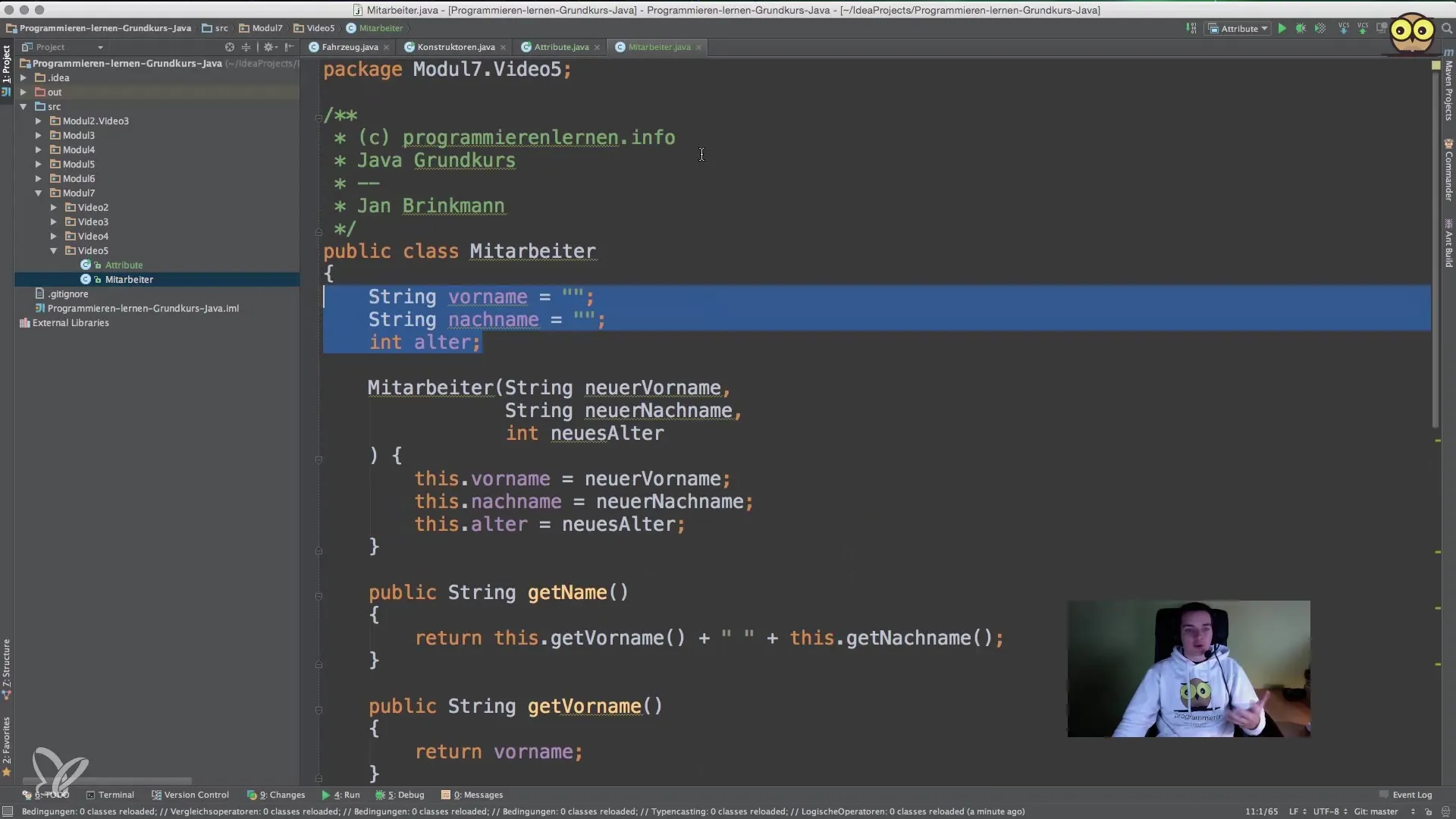
Summary – The effective use of attributes in Java
Throughout this guide, you have learned how to use attributes in Java and appreciated the importance of getter and setter methods. The logical structure and maintenance of attributes are crucial for clean code.
Frequently Asked Questions
How do I define an attribute in Java?Attributes are defined in the class and represented by variables.
What are getter and setter methods?Getters are methods that return attributes, while setters are methods that change attributes.
What are constructors used for in Java?Constructors initialize the attributes of an object when it is created.
Why is encapsulation important?Encapsulation protects data integrity and promotes a clean interface for class management.
How can I automatically generate getters and setters?Many IDEs have a feature that automatically creates the getter and setter methods for the selected attributes.


